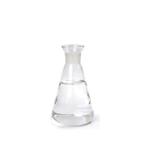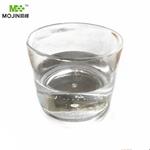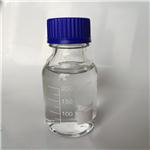- Diisobutylamine
-

- $50.00 / 1kg
-
2023-08-02
- CAS:110-96-3
- Min. Order: 1kg
- Purity: 99.9%
- Supply Ability: 10000MT
- Diisobutylamine
-

- $0.00 / 25KG
-
2023-07-04
- CAS:110-96-3
- Min. Order: 1KG
- Purity: 99%
- Supply Ability: 50000KG/month
- Diisobutylamine
-

- $0.00 / 1KG
-
2023-05-24
- CAS:110-96-3
- Min. Order: 1KG
- Purity: 99%
- Supply Ability: 20 mt
|
| | Diisobutylamine Basic information |
| Product Name: | Diisobutylamine | | Synonyms: | (i-C4H9)2NH;1-Propanamine,2-methyl-N-(2-methylpropyl)-;2-methyl-n-(2-methylpropyl)-1-propanamin;amine,diisobutyl;bis(2-Methylpropyl)amine;bis(beta-methylpropyl)amine;Di(-2-methylpropyl)amine;dibutylamine(non-specificname) | | CAS: | 110-96-3 | | MF: | C8H19N | | MW: | 129.24 | | EINECS: | 203-819-3 | | Product Categories: | Amines;C8;Nitrogen Compounds | | Mol File: | 110-96-3.mol |  |
| | Diisobutylamine Chemical Properties |
| Melting point | -77 °C (lit.) | | Boiling point | 137-139 °C (lit.) | | density | 0.74 g/mL at 25 °C (lit.) | | refractive index | n20/D 1.4081(lit.) | | Fp | 85 °F | | storage temp. | Flammables area | | solubility | insoluble to slightly soluble in water; soluble in ethanol, methanol,
ethyl ether, ethyl acetate, acetone, benzene, aromatic and aliphatic hydrocarbons,
fixed oils, mineral oil, oleic and stearic acids | | pka | 11.07±0.28(Predicted) | | form | Liquid | | color | Clear | | Odor | amine odor | | Water Solubility | 5 g/L (20 ºC) | | Sensitive | Air Sensitive | | BRN | 1209251 | | Dielectric constant | 2.7(22℃) | | LogP | 2.383 (est) | | CAS DataBase Reference | 110-96-3(CAS DataBase Reference) | | NIST Chemistry Reference | 1-Propanamine, 2-methyl-N-(2-methylpropyl)-(110-96-3) | | EPA Substance Registry System | Diisobutylamine (110-96-3) |
| | Diisobutylamine Usage And Synthesis |
| Chemical Properties | The chemical reactivity of diisobutylamine is similar to other aliphatic amines and
is governed by the unshared electron pair on the nitrogen atom. It is a strong base
tending to form salts with acids. As with other secondary amines, diisobutylamine
can be nitrosated, especially under acidic conditions, by nitrite ion or by nitrogen
oxides from the air to form the carcinogenic and mutagenic N-nitrosodiisobutylamine
(Olah et al 1975). | | Uses | Diisobutylamine was used to study the effect of achiral amine on hydrogenation of ethyl pyruvate over cinchonidine-Pt/Al2O3 catalyst system. Diisobutylamine is the principal starting material for the herbicide Butylate (Zeneca). | | Production Methods | Diisobutylamine can be produced by the reaction of ammonia and butanol over a
dehydration catalyst at high temperature and pressure (Hawley 1977). Alternatively,
ammonia, butanol, and hydrogen can be passed over a dehydrogenation
catalyst. In 1976, 18,000 tons of diisobutylamine were produced (Schweizer et al
1978). Diisobutylamine is also naturally present in foods and soil.
As with other secondary amines, diisobutylamine can be nitrosated to form the
highly toxic (Olah 1975) N-nitrosodiisobutylamine (Guttenplan 1987; Vlasenko et
al 1981; Spiegeholder et al 1978). Thus, nitrosation of commercial preparations of
diisobutylamine occurs on standing, presumably by reaction with nitrogen oxides
in the air (Spiegelhalder et al 1978) and N-nitrosodiisobutylamine has been found
in various fishery products (Kawabata et al 1974) and other foods (Osborne 1972;
Telling 1972). | | General Description | Diisobutylamine appears as a clear colorless liquid with an ammonia-like odor. Insoluble in water and less dense than water. Hence floats on water. Vapors heavier than air. Toxic oxides of nitrogen produced during combustion. | | Air & Water Reactions | Highly flammable. Sensitive to heat and air. Insoluble in water. | | Reactivity Profile | Diisobutylamine can react vigorously with oxidizing materials . Neutralizes acids in exothermic reactions to form salts plus water. May be incompatible with isocyanates, halogenated organics, peroxides, phenols (acidic), epoxides, anhydrides, and acid halides. Flammable gaseous hydrogen may be generated in combination with strong reducing agents, such as hydrides. | | Health Hazard | Inhalation of high concentrations of vapor will cause irritation of the respiratory tract and the lungs. Contact with liquid may result in severe skin and eye irritation. Exposure to concentrated vapors may result in corneal edema. Poisonous if swallowed. | | Health Hazard | Diisobutylamine is a relatively strong base and is therefore irritating to the eyes,
respiratory tract, and skin. Inhalation of vapors can result in pulmonary edema
following prolonged exposure. Ingestion of liquid can cause severe burning of the
esophagus. | | Industrial uses | Diisobutylamine is used as a chemical intermediate in the manufacture of several
agricultural and pharmaceutical products. | | Safety Profile | Poison by ingestion. A
dangerous fire hazard when exposed to heator flame; can react vigorously with oxidizing
materials. To fight fire, use alcohol foam,
CO2, dry chemical. When heated to
decomposition it emits toxic fumes of Nox | | Metabolism | There is little information available on the metabolism of diisobutylamine. |
| | Diisobutylamine Preparation Products And Raw materials |
|